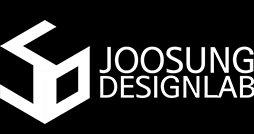Hyun Seok Kang, Gunho Kim (SGHS)
The EXPO ’70 Korean Pavilion is a strange compromise between the different aspirations of the state and the individual. In this exhibition, we move the two historic times of EXPO ’70 Korean Pavilion, which could not coexist, to face a neutral common ground. Incompatible phenomena are contained in one dimension through a parallax viewpoint. The EXPO ’70 Korean Pavilion, which is inside the exhibition hall, exists between the phenomena created by two objects installed outside. Newly presented points of view, depending on the position of the changing observer, constantly fluctuate against a background of the two phenomena and confront the closely related viewpoints of the EXPO ’70 Korean Pavilion.
When you sit on a stool in the shape of the EXPO ’70 Korean Pavilion, the exhibition space will be placed in the dimension of a cooperative sensory experience. With the reprinted electronic music by Seokhee Kang playing in the background, the space of the intended boundaries of the architects of the KECC were redrawn and expanded. All the surrounding areas have become a part of architecture, and the narrative-free atmosphere of happenings and the mood that the future exhibition room tried to create are restored in the present time. Objects installed outside the exhibition hall do not belong to the inside of the national pavilion, but they are a third space that exists in the national pavilion in an extended or parasitic way. They try to overcome the boundary constraints of the state and to expose their mental and physical possibilities indefinitely, but they only reveal the paradoxical situation that, as revealed at the edge of the state, the state is an opportunity as well as a limit to the individual. The non-material space of straight and curved lines created by the transparent apparatus that resembles the overlapping and curved lines of paper and the inflated soap bubbles constantly converges and emerges endlessly through media phenomena. The casual changes in the interior of the exhibition hall and the natural environment transform the surrounding space in a variety of ways through smooth reflection and diffusion.
From another point of view, the object is read with a reduced architectural model. External fixtures belong to the same category with that of the EXPO ’70 Korean Pavilion inside: “State Project Architecture.” However, the external fixtures are eager for liberation from direct symbolism and solid narrative that represent the state and nation. Instead of abandoning autonomy, they structuralize and perform the “situation” that a given context, external environment, and internal individual spaces form simultaneously. Thus, our work crossing semantic networks of “loosening”, “ambiguity”, “permeability”, “interference”, “atmosphere” and “mood” can apply flexibly to other places, scales and programs. We see this phenomenon as the media itself and imagine that this media becomes a message of state projects.
















FabBros., TIEL (Joong Han Lee, Charlotte Therre)




